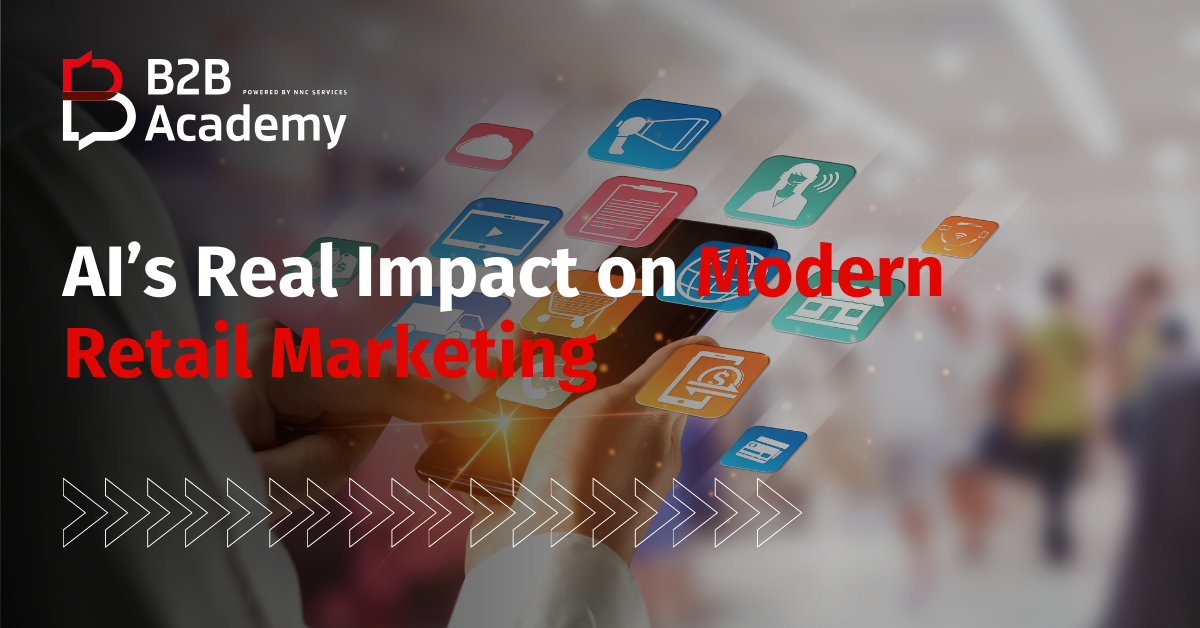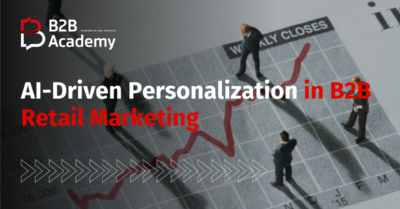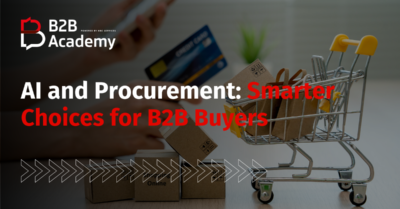If there’s one thing retail marketers have learned in the past few years, it’s that data alone doesn’t move the needle. You can have dashboards overflowing with metrics, but if you can’t make decisions from them in real time, you’re just watching numbers change colors.
AI is changing that quietly and quickly turning static data into dynamic action. Retail brands, both B2B and B2C, are learning that the real opportunity lies not in collecting more data, but in understanding how to make it work for you.
So, how do leading retailers move from data to demand? And how can you apply those lessons to your own strategy? Let’s unpack what’s really changing behind the scenes.
1. From Static Segmentation to Real-Time Personalization
Traditional retail marketing was built on segments groups of customers that looked similar on paper. Maybe they had the same job title, bought from the same region, or shared similar purchase sizes. The logic was simple: people who behave alike should be marketed to alike.
The problem? Human behavior isn’t static. It shifts with context, price sensitivity, and trends sometimes overnight.
AI takes segmentation one step further by recognizing those shifts as they happen. Instead of “Marketing Mary, age 42, based in Chicago,” you get a living, breathing customer profile that updates every time she clicks, scrolls, or hesitates at checkout.
In practical terms:
- Predictive AI models can tell you when a potential buyer is most likely to act before they do.
- Dynamic pricing adjusts based on customer intent, not just inventory.
- AI-driven recommendations evolve with user behavior instead of being locked into a demographic box.
You’re no longer talking to your audience; you’re talking with them, and that subtle shift is what defines modern retail personalization.
2. Predictive Marketing: Anticipating, Not Reacting
Most marketers spend half their week reacting. Reacting to a campaign that didn’t perform. Reacting to a sudden drop in conversions. Reacting to leadership asking, “Why are sales down this month?”
AI changes that dynamic by giving you something better than hindsight: foresight. Predictive analytics don’t just describe what happened; they help you anticipate what will happen next.
Here’s what that looks like in practice:
- Demand forecasting powered by AI helps you anticipate product trends before they peak.
- Lead scoring models automatically identify which prospects are ready to convert.
- Customer churn prediction alerts you when relationships are starting to slip.
Instead of reacting to bad news, you can prevent it or even use it to your advantage.
And this isn’t limited to B2C retail. In B2B, predictive insights can flag when an account is entering a new buying cycle or when procurement is starting to evaluate vendors again.
The best part? These models learn over time. The more data you feed them, the sharper their instincts become, much like your top-performing sales rep who always seems to “just know” when to call a prospect.
3. Adaptive Campaigns: Letting AI Fine-Tune While You Focus on Strategy
There’s a running joke among marketers that half of the job is adjusting campaign budgets based on yesterday’s numbers. AI takes that task off your plate and does it faster than your morning coffee cools down.
Adaptive campaigns are one of the most practical applications of AI in retail marketing. Instead of launching a campaign and hoping for the best, AI tools:
- Continuously test variations of copy, visuals, and CTAs in real time.
- Shift budgets toward channels that deliver better ROI.
- Pause underperforming ads automatically before they waste budget.
Think of it as your campaign running on autopilot but with a co-pilot that learns and improves as it goes.
This doesn’t mean creativity takes a back seat. In fact, it gives you more space to focus on the part AI can’t replicate: crafting human stories that connect.
4. The New Role of Marketers: From Executors to Orchestrators
With AI handling repetitive analysis and optimization, your role as a marketer shifts from executor to strategic orchestrator.
You’re no longer buried in manual reports. Instead, you’re asking smarter questions like:
- Which segment deserves a dedicated ABM campaign next quarter?
- What message fits the emotional tone of our ideal customer right now?
- How can we align marketing data with sales insights in real time?
AI gives you clarity, not just automation. It turns marketing from a checklist into a growth system.
And yes, that means some traditional metrics lose their weight. Open rates and click-throughs still matter, but not as much as understanding intent.
If you’re aligning your data, message, and AI tools toward the right intent signals, you’re already ahead of most of the market.
5. Real Stories from Retail
To make this concrete, let’s look at a few examples of how brands are already rethinking their playbooks:
- A B2B supply company used AI-driven content scoring to determine which blog topics generated the highest buyer engagement. The result? 27% higher conversion rates on their next campaign.
- A global apparel retailer combined AI with behavioral data to predict which products would trend two weeks before they actually did letting them adjust inventory and pricing early.
- A SaaS provider integrated AI-driven lead scoring into its CRM, helping its sales team prioritize the top 10% of accounts ready to buy.
Each of these examples shares one common factor: actionable data. AI doesn’t replace human judgment it sharpens it.
6. Preparing for the Next Wave
So where does this leave you?
You don’t need to overhaul your entire marketing tech stack overnight. Instead, start by asking:
- What data am I collecting that I’m not yet using?
- Which manual processes drain my team’s time every week?
- How could AI enhance (not replace) the decisions we already make?
The retail landscape is changing fast, but the winners won’t be those who chase every new trend. They’ll be the ones who integrate AI into their everyday decisions, test smarter, and keep the focus on customer experience.
Want to See It in Action?
If you’re ready to see how predictive marketing and real-time personalization actually work in retail, join us for our upcoming webinar: AI Trends in Retail Marketing. Our experts will walk you through real-world use cases, practical tools, and lessons from brands already applying AI to turn data into demand.
AI isn’t a magic wand, but it’s a powerful lens. When used right, it helps you see patterns, predict outcomes, and adapt faster than your competitors. The shift isn’t just technological; it’s strategic. Because in retail marketing today, data doesn’t win deals. Decisions do.




